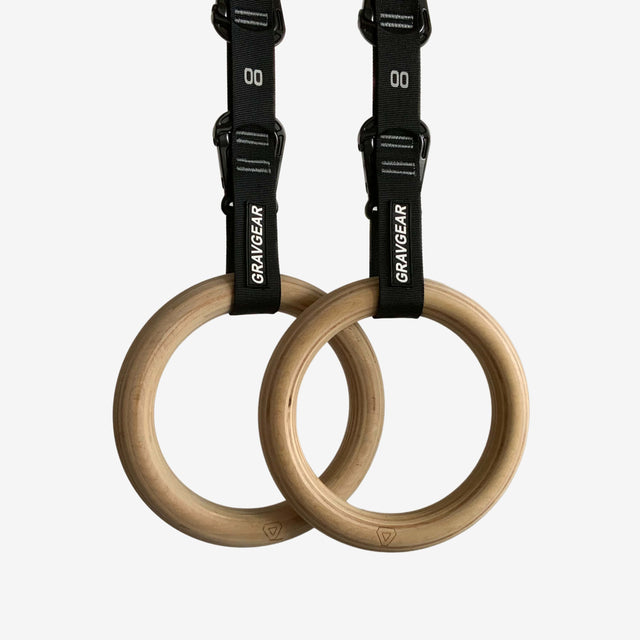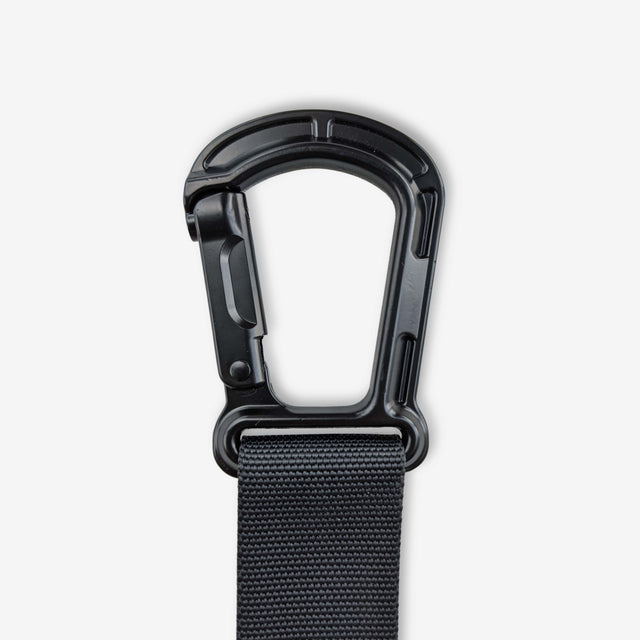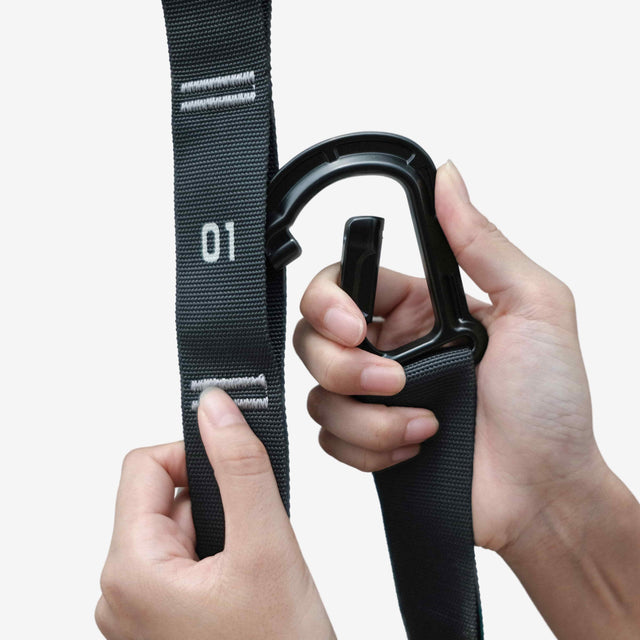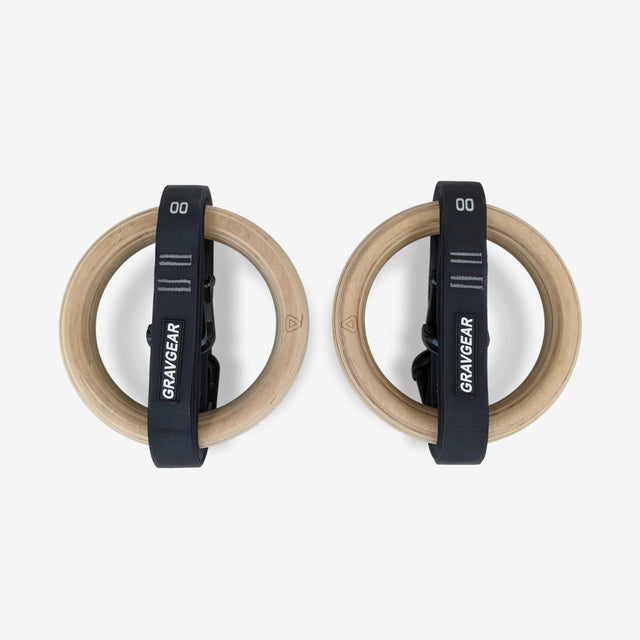5 Maltese Rings Gymnastics Mistakes & How to Avoid Them
The maltese is an advanced gymnastics hold performed on rings, requiring full-body horizontal support with arms locked and hips level with the hands. It combines extreme strength and control, resembling an iron cross but held parallel to the ground. Strength needed: 13+ second back lever, 1.5x bodyweight bench press.
Jump to:
- 5 Common mistakes in maltese rings gymnastics training & how to avoid them
- 🤔 What is the maltese on gymnastics rings
- Why the maltese is a coveted skill in gymnastics & fitness 🙏
- 🏁 3 Main maltese gymnastics rings prerequisites
- 5-Step Maltese rings gymnastics progression
- 3 Advanced tips for mastering the maltese gymnastics rings skill
- 🤔 Choosing the best gymnastics rings for the maltese
- 🌡️ How to get the most from your maltese gymnastics rings
5 Common mistakes in maltese rings gymnastics training & how to avoid them
🚫 Shoulder elevation & improper scapular retraction during holds
One of the most common errors in maltese training is allowing the shoulders to elevate instead of staying depressed and protracted.
When your shoulders rise toward your ears, you lose the stability needed for the hold and increase strain on your traps. Instead of your anterior deltoids and chest.
How to fix it
- Focus on scapular control exercises like scapular push-ups and wall slides.
- During holds, consciously push your shoulders down and forward, keeping them locked in place.
- Visualize creating as much space as possible between your ears and shoulders.
Why it matters
Proper scapular alignment ensures force is distributed correctly, reducing the risk of strain or injury.
It also sets the foundation for progressing to advanced transitions like planche-to-maltese.
🚫 Flaring elbows or sagging hips
Elbow flaring is a common issue when strength levels are inadequate or when trying to “cheat” the hold.
Similarly, sagging hips disrupt your body’s alignment, making the hold less effective and more difficult to maintain.
How to fix flaring elbows
- Keep your elbows locked and straight.
- Practice with a resistance band to reduce load and focus on proper arm positioning.
- Include straight-arm strength exercises like planche leans to condition your triceps and shoulder stabilizers.
How to fix sagging hips
- Work on core strength with hollow body holds and dragon flags.
- During maltese practice, ensure your hips stay level with your hands by actively engaging your glutes and core.
- Use a mirror, video, or bro to check your form.
Why it matters
Proper alignment not only makes the movement more efficient but also ensures you’re targeting the correct muscles, such as the anterior deltoids, chest, and core stabilizers.
🚫 Overtraining without adequate joint recovery
Overloading your shoulders and elbows without giving tendons and ligaments enough time to recover is a fast track to injury.
The maltese places extreme demands on your connective tissues, which adapt more slowly than muscles.
How to fix it
- Follow a structured training schedule that includes rest days.
- Do low-intensity mobility work like shoulder rotations and band pull-aparts to promote blood flow and recovery. (do those dynamic stretches 30s at a time)
- Avoid training the maltese on consecutive days, especially when first starting out. 1-2 times a week is good.
Why it matters
Overtraining can lead to chronic injuries like tendonitis, delaying your progress or forcing you to stop training entirely. Use a gradual approach to protect your joints while still building strength.
🚫 Ignoring prerequisite strength & flexibility
Attempting the maltese before building adequate foundational strength often results in poor technique and frustration.
Without a solid base, you’re likely to compensate with bad habits that become harder to fix later.
How to fix it
Master prerequisite skills like the back lever, straddle planche, and hollow body hold before progressing to maltese-specific training.
Also, achieving benchmarks like a 1.5x bodyweight bench press and solid scapular mobility drills ensures your body is prepared for the demands of the maltese.
Why it matters
- Skipping the basics can lead to stalled progress, poor form, and avoidable injuries.
- Building a strong foundation sets you up for long-term success.
🚫 Lack of progression & patience
Many trainees rush into full holds without working through the proper progressions. This leads to inefficient training and discouragement when results don’t come quickly.
How to fix it
Break your training into manageable steps:
- Start with tucked maltese holds
- Progress to partial range-of-motion drills
- And integrate tools like resistance bands to reduce load
It’s also great to celebrate small wins, like holding a tuck or transitioning cleanly into a partial maltese. This isn’t some fiesta, more like a facetime with a friend.
Why it matters
- Progressions ensure steady improvement while maintaining motivation.
- Patience allows you to develop the strength and control needed for a clean, impressive maltese.
🤔 What is the maltese on gymnastics rings
The maltese is an advanced isometric hold performed on still rings that pushes strength and control to the limit.
It demands full-body horizontal support with arms locked and hips level with the hands.
Every muscle in your upper body and core is engaged, making it one of the most challenging gymnastic positions to master.
This skill stands out because of its precision. You need a perfectly straight body line with your shoulders stabilized and no sagging or elevation. Even a slight misalignment can break the hold and reduce its effectiveness.
The hollow body position is essential here – keeping your core tight and back slightly rounded to maintain balance.
💭 Maltese gymnastics rings origin of name
The name maltese likely comes from its resemblance to a swallow in flight, often referred to as "hirondelle" in French or "rondine" in Italian.
While some think it connects to the Maltese cross symbol, there’s no actual link.
The skill emerged in gymnastics in the 1950s, with pioneers like Ruggero Rossatto and Yuri Chechi refining it into the polished display we see today.
In modern gymnastics and calisthenics, the maltese is a benchmark of strength and control. It’s not just about the hold itself – mastering it opens the door to even more advanced elements like the maltese press and balandin.
Whether you’re aiming for competitions or just making yourself proud, the maltese is the ultimate challenge.
Why the maltese is a coveted skill in gymnastics & fitness 🙏
The maltese hold combines gymnastic elegance with pure grit. This isometric hold requires you to suspend your body in a horizontal position, arms locked, while balancing your entire weight against gravity.
It’s not just strength – it’s precision, timing, and the ability to make it look effortless.
Your anterior deltoids and pectorals do the heavy lifting, but it’s the smaller stabilizers in your core and shoulders that really earn their stripes.
These muscles aren’t just holding you up; they’re locking your body into perfect alignment, preventing even the slightest sag.
It’s a double whammy – raw power meets meticulous control.
🥇 What makes the maltese even more valuable is its carry-over to other advanced skills…
Conquering it primes you for movements like the planche, back lever, and iron cross. These are not just visually impressive – they demand a foundational strength that few achieve.
Training for the maltese is like sharpening every tool in your box, ensuring your body can handle the strain and complexity of high-level calisthenics.
Athletes in functional fitness and calisthenics know the value of the maltese. It’s not just about looking strong – it’s about being strong.
Developing the ability to hold this position builds resilience in your tendons and joints, which translates to better performance and fewer injuries in other training.
The maltese humbles even the most experienced lifters, showing them a different kind of strength – one that relies on total-body synergy and unwavering control.
It’s a skill that commands respect. No shortcuts, no gimmicks. The maltese is proof of mastery, a benchmark that says, “I’ve put in the work.”
Whether it’s at the gym, in the park, or hanging from a tree branch in the outback, this is the skill that separates the serious athletes from the rest.
🏁 3 Main maltese gymnastics rings prerequisites
🥇 Core strength
Before attempting the maltese, your core strength must be solid. A good starting benchmark is holding a back lever for at least 10 seconds.
The back lever trains your body to stabilize in a horizontal position, similar to what’s required for the maltese.
The straddle planche is another must-have skill. This movement builds static core stability, teaching you to lock your hips, core, and shoulders into a unified structure.
Core stability isn’t just about abs – it’s about total-body control. Training for static core holds like the hollow body position and advanced planks lays the foundation.
These movements teach your core to resist collapsing under pressure, a critical component of the maltese.
🥈 Joint & tendon resilience
The maltese places immense strain on your elbows and shoulders, so preparing these joints is essential. Weighted dips and strict push-ups are non-negotiable accessory movements. They strengthen the pushing mechanics while protecting your elbows and shoulders from overload.
Tendons and ligaments take longer to adapt than muscles. Focus on slow, controlled exercises like eccentric push-ups or ring support holds. These movements train your connective tissue to handle the stress of advanced skills. Consistency is key – rush this, and you’re asking for an injury.
🥉 Recommended strength benchmarks
A 1.5x bodyweight bench press is a reliable strength benchmark before tackling the maltese. It ensures your pushing power is strong enough to handle the load. Shoulder flexibility is equally important. Advanced scapular stability drills like scapular pull-ups and protraction holds should be part of your routine. They prepare your shoulders to lock into the hollow position required for the maltese.
5-Step Maltese rings gymnastics progression
1️⃣ Start with tucked maltese holds
The tucked maltese is the safest way to introduce your shoulders and core to the demands of this advanced hold.
By keeping your knees tucked to your chest, you reduce the load on your shoulders and make it easier to maintain a strong protracted position (shoulders pushed forward).
How it works
Tucking your knees shifts your center of gravity closer to your core.
This lowers the leverage and makes the exercise manageable while still activating your anterior deltoids, pecs, and transverse abdominis.
What to focus on
Maintain a hollow body position—your lower back should stay flat, and your core engaged.
Keep your elbows locked throughout the hold to condition your arms for the full maltese.
Why it’s important
- The tucked position strengthens stabilizer muscles that don’t usually get worked in traditional gym training.
- You’re building the shoulder endurance and scapular control needed for advanced isometric holds.
Preparation exercises
| Scapular push-ups | Planche leans |
| Keep your arms straight and focus on moving only your shoulder blades as you push and retract.
These improve scapular mobility and control. |
Lean forward with straight arms, protracting your shoulders as much as possible.
This mimics the body position of the maltese without the full weight of your body. |
2️⃣ Progress with partial range-of-motion drills
Once you’ve built a solid foundation with tucked holds, it’s time to add movement and partial extensions.
These drills teach your body to manage dynamic transitions and gradually increase the load on your shoulders.
Maltese rocks
- Start in a tucked maltese position.
- Lean forward as far as you can while maintaining straight arms and a strong hollow body.
- Slowly return to the starting position.
Low-ring holds
- Set your gymnastic rings just above waist level
- Extend your body slightly while holding the rings
Adjust the height to control the intensity.
Benefits
Partial extensions let your shoulders and elbows adapt to the strain of the maltese incrementally.
This prevents injury while developing strength in the anterior deltoids, chest, and scapular stabilizers.
Also, controlled rocking builds confidence for transitions like planche-to-maltese, making them smoother and more stable.
3️⃣ Use progression tools for support
To bridge the gap between partial holds and the full maltese, use tools like resistance bands and counterweights.
These allow you to focus on perfecting your form while building the necessary strength.
Resistance bands
- Anchor a band overhead and loop it under your hips or legs
- Perform static holds or dynamic transitions with the band reducing some of your body weight
This reduces the strain on your joints while letting you practice proper alignment.
Weighted counterbalances
Use a spotting belt with an attached counterweight system. This offloads just enough weight for you to hold positions safely.
Adjust the weight over time as you get stronger.
Why progression tools work
- They prevent overloading your shoulders and elbows, which are common weak points when training for the maltese.
- They allow you to practice extended holds earlier in your progression, accelerating your strength and muscle memory.
4️⃣ Integrate complementary skills
Training related skills like the iron cross, straddle planche, and back lever improves your overall strength and control.
These moves target similar muscles and help you develop the coordination required for the maltese.
Iron cross
Strengthens your deltoids, scapular stabilizers, and chest, building the base strength needed to support your body horizontally.
Straddle planche
Improves anterior deltoid strength and core engagement. Gradually leaning forward in the planche strengthens the same muscles used in the maltese.
Back lever
Develops scapular retraction and lat strength, essential for maintaining stability during advanced ring holds.
5️⃣ Combine movements for advanced control
The final step in your progression is combining static holds and dynamic transitions. This teaches your body to maintain stability under varying demands and helps you refine your technique.
Combining movements forces your stabilizer muscles to fire continuously, building the isometric endurance required for advanced gymnastic holds.
This step also improves your precision, helping you achieve a clean, controlled maltese that’s ready for performance.
Planche-to-maltese transitions
Start in a planche and slowly lean forward while lowering your body into the maltese position. The transition builds control and confidence for the full hold.
Static maltese holds
Practice holding the full maltese on low rings or parallettes. Start with short durations (5–10 seconds) and gradually increase your hold time as your strength improves.
3 Advanced tips for mastering the maltese gymnastics rings skill
👀 Visualizing proper alignment
Mastering the maltese is as much a mental exercise as it is physical. Visualizing the perfect alignment reinforces muscle memory, ensuring your body adapts to the demanding positioning.
Imagine and feel your arms are fully extended, shoulders retracted and depressed, and your core forming a straight, hollow line from shoulders to toes.
This mental imagery helps align your neuromuscular coordination, particularly during isometric holds where precision is everything.
A mirror or video feedback can be invaluable. Compare your holds to the ideal maltese shape, focusing on fixing sagging hips, elevated shoulders, or flaring elbows.
Even subtle corrections can significantly improve stability and reduce wasted energy during training.
Note: Doing all this while controlling your breathing is the KEY to your maltese success.
🦸 Combining superset training
Building specific strength for the maltese isn’t about isolating a single muscle—it’s about integrating your entire upper body. Superset training combines complementary exercises, such as dips, push-ups, and static holds, into a single sequence that overloads the same muscle groups without excessive rest.
Start with weighted dips to target your chest and shoulders, then transition into ring push-ups to emphasize core stability and dynamic control.
Finish with static holds like tucked planche or partial maltese progressions to condition the isometric strength required for the skill.
This method trains endurance, explosive power, and static strength in one go:
| Set 1 | Weighted dips |
| Set 2 | Ring push-ups |
| Set 3 | Tucked planche or partial maltese |
🗓️ Keeping progress sustainable
Consistency beats intensity for long-term gains. Maltese training places immense strain on joints and tendons, making periodisation essential to avoid burnout or injury.
Alternate between heavy loading weeks (focused on strength-building progressions) and deload weeks (dedicated to light mobility work and active recovery).
Track your progress regularly. Record the duration of your holds, the level of support used (bands, spotters, or counterweights), and your ability to maintain proper form.
Periodic evaluation not only prevents plateaus but also helps you adjust your training to focus on specific weaknesses, such as scapular stability or core endurance.
Example load & deload month
| Phase | Focus | Example workouts |
| Week 1-3 | Heavy loading phase | Strength-building progressions | Monday: Weighted dips, ring push-ups, partial maltese holds. |
| Wednesday: Scapular stability drills, tuck planche holds, resistance band assisted maltese progressions. | ||
| Friday: Isometric core training (hollow body holds, L-sits) and full-body mobility work. | ||
| Week 4 | Deload Week | Light mobility and recovery | Monday/Friday: Low-intensity ring support holds, shoulder dislocates, scap pull-ups. |
| Wednesday: Dynamic stretching, yoga, and band-assisted movement patterns. | ||
| Evaluation | Assess and adjust | Record hold durations, reduced assistance needs, and scapular control.
Adjust the next phase to address weak points. |
🤔 Choosing the best gymnastics rings for the maltese
🪵Wood vs plastic
Wood rings are the premium choice for a reason. The grip is unparalleled, especially for sweaty hands during longer sessions.
The natural texture of wood absorbs moisture, giving you a secure hold for demanding skills like the maltese. It’s also gentler on the skin, which is critical for maintaining control during false grips or static holds.
However, wood isn’t built to withstand the outdoors for long stretches. Exposure to rain or sun can lead to splintering, which means they’re better suited for indoor or shaded training areas.
Plastic rings are more versatile for outdoor setups. They can handle rain, sun, and dirt without breaking down, making them ideal for park workouts or travel.
While their smoother surface can be slippery when wet, adding grip tape or chalk can mitigate this.
Plastic rings also offer durability without the upkeep wood requires, but the trade-off is a slightly less natural feel in your hands.
And when you’re under the pressure of the maltese and training around that, wooden rings can give you that extra support. Where you’re not looking for the hand tenderisation rough plastic rings can have, zelkova wood rings have a smooth but grippy finish.
🏗️ Strap length & adjustability
Straps are as important as the rings themselves. For indoor use, shorter straps are usually better, especially if your setup requires low anchoring points for progressions like tucked maltese holds.
For outdoor use or higher anchors, longer straps are essential for flexibility and reach.
Marked straps simplify alignment, which is vital for ensuring both rings are perfectly level.
Even small height mismatches can throw off your balance during the maltese, increasing strain on your shoulders and core stabilizers.
Investing in straps with clear markings saves time and ensures consistent setups, whether you’re training at home or in the bush.
Carabiner straps do this easily as opposed to buckles.
✨ Build quality for safety & durability
Training on rings means trusting your gear completely.
High-tensile straps, bombproof buckles/carabiners, and reinforced stitching are non-negotiable for safety.
Look for equipment tested for heavy loads—think 300+ kg weight ratings—to avoid catastrophic failures during advanced holds.
There are horror stories of cheap buckles snapping or straps fraying mid-session. One guy in an amazon review said he nearly fell on his head when a flimsy metal winch gave out. To avoid these risks, prioritize rugged materials and well-reviewed brands.
Double-layered straps and solid steel buckles are your best bet for a reliable, long-lasting setup.
💪😎 Aesthetic & practical considerations
A sleek and professional look isn’t just about vanity—it can motivate you to take your training seriously. Wood rings often win here, with their natural aesthetic blending into gym setups beautifully.
They exude quality and are the top choice for anyone prioritizing premium gear.
For athletes who travel or train on the go, portability is key. Compact, lightweight rings and rollable straps make it easy to set up in parks, hotel gyms, or the outback.
Quick-release buckles and easy adjustments ensure you spend less time setting up and more time training.
🌡️ How to get the most from your maltese gymnastics rings
🌲 Using rings into outdoor workouts
Using gymnastics rings outdoors is one of the best ways to inject variety into your training while challenging your body in new ways.
Whether you’re in a park, backyard, or near a beach, all you need is a sturdy overhead structure—a tree branch, goalpost, or playground frame works perfectly.
Outdoor training adds an unpredictable element to your workouts. Uneven ground, wind, or different grips all force your stabilizer muscles to work harder, improving your overall strength and control.
Plus, being outside keeps things fresh, and there’s something uniquely satisfying about knocking out a set of dips or pull-ups under the open sky of the outback.
🪜 Transitioning from basic skills to advanced holds
Progressing with gymnastics rings is about mastering the basics and gradually scaling up.
Start with ring push-ups, dips, and false grip holds to build fundamental strength.
Once you’re confident, move into intermediate skills like tucked planche holds or straight arm ring support.
These movements prepare your shoulders and core for the demands of advanced holds like the maltese.
For transitions, keep your progression structured e.g. move from tucked holds to straddle variations before attempting a full maltese.
Every step builds specific muscles and develops the control needed to avoid injury while ensuring progress.
💅 Tips for maintaining equipment for longevity
Your rings are an investment in your training, so maintaining them ensures safety and durability.
Wooden rings should be wiped down after each session to prevent sweat build-up, which can lead to splinters or cracks.
If the surface starts feeling rough, a light sanding restores the smooth finish.
For plastic rings, regular cleaning with mild soapy water keeps grime in check.
Ensure the straps remain strong by avoiding prolonged exposure to moisture or sunlight, which can weaken the fibers.
Inspect buckles and stitching regularly, especially after heavy training sessions, to catch any wear before it becomes a safety risk.
🗝️ Creating a sustainable routine
Getting the most out of your rings means integrating them into a routine that works for your goals and lifestyle.
Combine ring training with traditional calisthenics or weights for a balanced program. As well as using them as portable equipment for travel workouts.
And who wouldn’t want to explore those outdoor training spots? Plenty of those down under.
Wrapping it alllll up
Share your progress in the Gravgear telegram channel
The Gravgear telegram channel is where the community comes alive.
Whether you’ve nailed your first tuck maltese or want advice on strap adjustments, this space is packed with enthusiasts who’ve been there.
Share your wins, troubleshoot sticking points, or simply connect with others who understand the grind.
Link this blog to your training group
Your calisthenics tribe will thank you.
Sharing this blog with your training group keeps everyone on the same page and sparks new ideas for using rings into workouts.
The maltese journey becomes more motivating when your crew is pushing alongside you.
Drop comments below
Your questions and feedback can be the exact insight someone else needs to progress.
Drop a comment below to share tips, ask for clarification, or highlight what worked for you.
Every contribution adds value to the wider community and helps us level up our training advice and update content.










0 Comments
There are no comments for this article. Be the first one to leave a message!